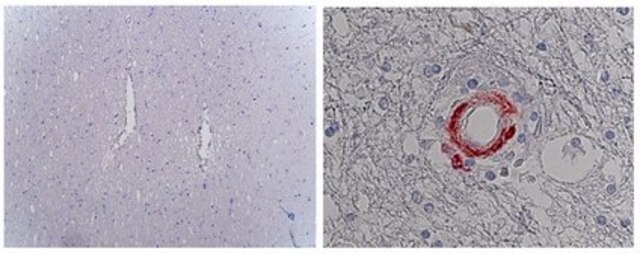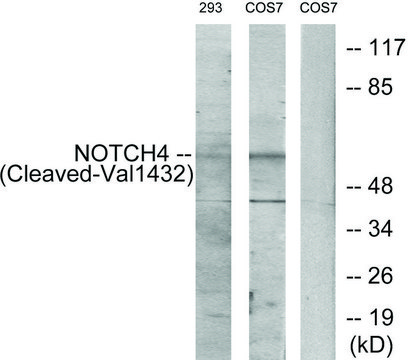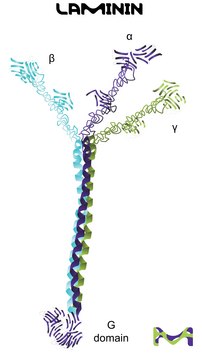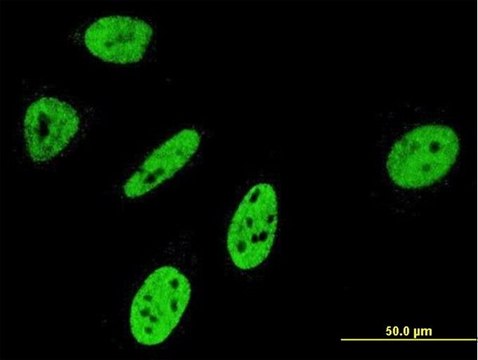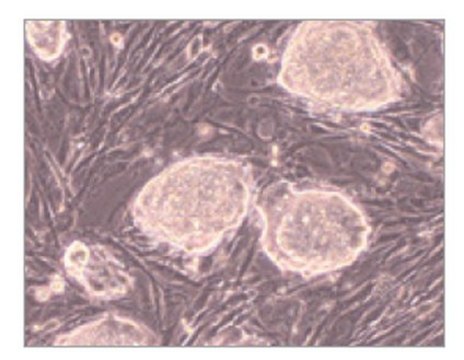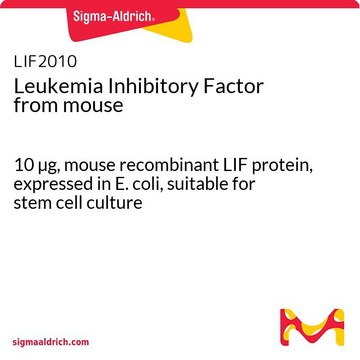MABC594
Anti-NOTCH 3/N3ECD Antibody, clone 1E4
clone 1E4, 1 mg/mL, from mouse
Synonym(s):
Neurogenic locus notch homolog protein 3, Notch 3, Notch 3 extracellular truncation, Notch 3 intracellular domain, N3ECD Domain, Ectodermal N3ECD, N3ECD
About This Item
Recommended Products
biological source
mouse
Quality Level
antibody form
purified immunoglobulin
antibody product type
primary antibodies
clone
1E4, monoclonal
species reactivity
human
concentration
1 mg/mL
technique(s)
electron microscopy: suitable
immunocytochemistry: suitable
western blot: suitable
isotype
IgG1κ
NCBI accession no.
UniProt accession no.
shipped in
wet ice
target post-translational modification
unmodified
Gene Information
human ... NOTCH3(4854)
General description
Specificity
Immunogen
Application
Immunohistochemistry Analysis: A representative lot of this antibody was used to detect NOTCH 3 in Huamn vascular smooth muscle cells & smooth muscle cells of vessels from CADASIL brain tissue (Jouet, A., et al. (2000) Journal of Clinical Investigation. 105(5):597-605).
Electron Microscopy: A representative lot of this antibody was used to detect NOTCH 3 in smooth muscle cells of vessels from CADASIL brain tissue (Jouet, A., et al. (2000) Journal of Clinical Investigation. 105(5):597-605).
Immunohistochemistry Analysis: A representative lot of this antibody was used to detect NOTCH 3 in vessels of a CADASIL patient (Rouchox, M.M., et al. (2003) American Journal of Pathology. 162(1):329-342).
Immunohistochemistry Analysis: A representative lot of this antibody was used to detect NOTCH 3 in Human colorectal carcinoma (Serafin, V., et al., (2011) Journal of Pathology. 224(4):448-60).
Apoptosis & Cancer
Developmental Signaling
Quality
Western Blotting Analysis: 1 µg/mL of this antibody detected NOTCH 3 & the ectodermal domain (N3ECD) in 10 µg of MCF-7 cell lysate.
Target description
This antibody detects both the full length NOTCH 3 protein (~260 kDa) and the ectodermal domain N3ECD (~210 kDa).
Physical form
Storage and Stability
Disclaimer
Not finding the right product?
Try our Product Selector Tool.
Storage Class Code
12 - Non Combustible Liquids
WGK
WGK 1
Flash Point(F)
Not applicable
Flash Point(C)
Not applicable
Certificates of Analysis (COA)
Search for Certificates of Analysis (COA) by entering the products Lot/Batch Number. Lot and Batch Numbers can be found on a product’s label following the words ‘Lot’ or ‘Batch’.
Already Own This Product?
Find documentation for the products that you have recently purchased in the Document Library.
Our team of scientists has experience in all areas of research including Life Science, Material Science, Chemical Synthesis, Chromatography, Analytical and many others.
Contact Technical Service